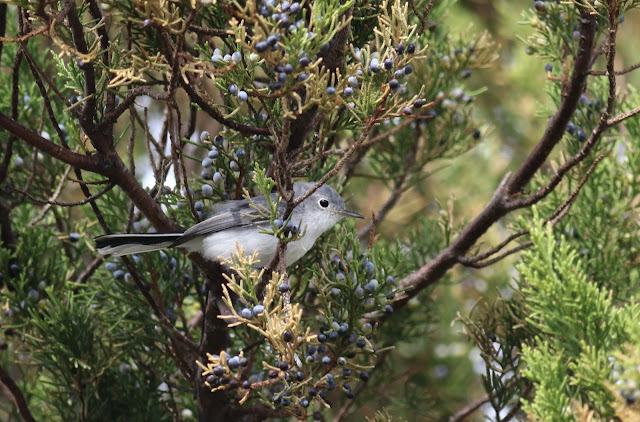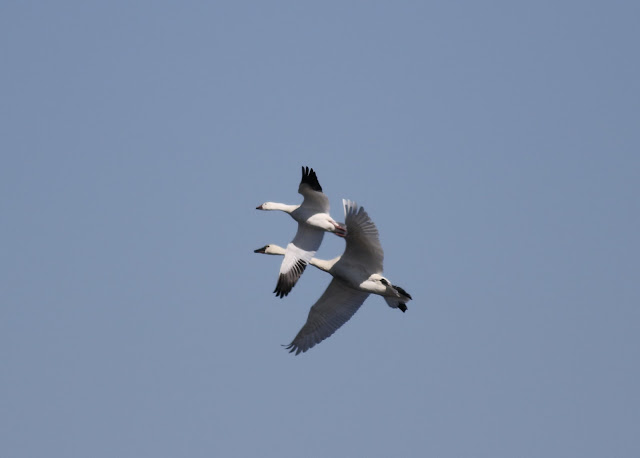Getting through the Brazil trip photos created a huge backlog of photos to share from after the trip. They are mostly of common NC birds so here goes an attempt to catch up.
Black-and-white Warbler at Airlie - Spring migration in Wilmington is sub-par compared to places more inland, but its still worth getting out.
Needham's Skimmer with some nice bokeh.
Green Heron at Airlie
Roseate Spoonbill - Airlie doesn't open early for birders anymore so the light was usually pretty harsh when the resident spoonbill was around.
In early September I finally became an American citizen!
White-eyed Vireos were really common at Burnt Mill Creek during migration.
Although Redstarts are also common, they are usually immatures or females so I paid more attention to this adult male.
Spring migration in Wilmington is also the time of silent empidonax flycatchers, so I started to refresh myself on the subtle differences for identification with my handy ID chart.
Nashville Warblers are easier to ID.
Great Blue Heron - always worth an early morning walk at Wrightsville Beach.
A Blue-winged Warbler is always a welcome sight in Wilmington. This one and perhaps another was seen multiple times at Burnt Mill Creek.
In late Sept and early Oct, the Caspian Terns can outnumber other tern species - Wrightsville Beach.
A presumed Yellow-bellied Flycatcher on 01Oct at Oleander Gardens. Note the very little contract between the throat and malar and belly, not to mention the solid white eye-ring.
Blackpoll Warbler also at Oleander on the same day.
Last year someone grabbed "my" staked out Lion's Mane mushroom that grows from this tree every year at BMC. This time it grew 10 feet higher up so no one attempted to grab it. I brought my tall ladder and was able to cut it down with an extension pole. I didn't weigh it, but it made me enough crab cakes for several good family meals.
Rose-breasted Grosbeak at BMC in Oct.
Ed Corey found 2 Gray Kingbirds at Fort Fisher in Oct.
When I got an alert of a Magnificent Frigatebird at Fort Fisher I figured the chase would be fruitless as this was my nemesis bird for NC and is notoriously difficult to chase as they are mostly seen flying by and can travel long distances in short amounts of time. I was happily surprised with some decent close passes when I made it there.
On October 8th, Shun, Sam and a few others helped me with the inaugural Big Sit at Fort Fisher. We had a decent flight of warblers and other migrants high overhead but not many touched down in the bushes making ID a challenge. We ended up with 73 species which ain't bad for not moving all day but fell way short of my expectations. Maybe we will be more lucky next year. If your interested in finding out more about the Big Sit, here is the website: https://www.thebigsit.org/
Cape May warblers did touch down in the red cedars.
BG Gnatty
I think there was a tad too much wind but it was coming from the right direction. Birds like this Northern Flicker flew out over the river and then thought twice about making the cross over into the wind and circled back.
One of the afore-mentioned Gray Kingbirds graced the Big Sit at the end of the day.
By the time the sun set, only my good buddy Shun kept me company. It was a fun full day and I was happy to head home.
October at Fort Fisher always means lots of good looks at Yellow-billed Cuckoos.
Scarlet Tanagers are pretty drab when we see them in Wilmington, but better than no Scarlet Tanagers.
This Pectoral Sandpiper at the north end of Wrightsville was doing its best Sharp-tailed impression.
Boat-tailed Grackles are so much fun to watch, they never get old.
In late October I convinced my buddy Bob Cowan to brave the crossing to Bald Head for a day of birding. I refuse to call it Bald Head Island because it is not an island at all. You can literally walk from Fort Fisher to get there without getting your feet wet. The Old Baldy lighthouse is the oldest lighthouse in NC.
Our best bird of the day was this somewhat late Gray-cheeked Thrush feasting on Beauty Berries outside the chapel.
Black-and-white Warbler at Bald Head.
A late Common Tern was still sporting its carpal racing stripe.
Fort Fisher had a couple good days of surf.
Some Dickcissels hung out at the Ferry terminal for over a week.
Clay-colored Sparrows too.
Lincoln's Sparrows are few and far between in Wilmington.
 A late Maggie.
A late Maggie.Mid November I took a trip with Henry out to the OBX to participate in the "Rarity Roundup". It was fun but kind of a flop in terms of rarities. These Sandhill Cranes on the way at Pungo were about the most rare things we saw.
A good example of a Tundra Swan with almost no yellow on the bill.
A nice size comparison of a Snow Goose with a Tundra Swan.
Black Bear at Alligator NWR.
Nutria at Buxton.
American White Pelican at Pea Island.
Not sure if this is a Red Wolf or a Coyote at Alligator. It didn't have a radio collar, but apparently there are two young wolfs that have not been tagged yet.
In November "my" Black-headed Gull came back. In fact this gull has been coming to the north end of Wrightsville for 8 years and was initially found by Sam Cooper. However, I love making the pilgrimage to the sand bar and have been keeping tabs on this bird ever since that day Sam found it.

Western Flycatcher (Cordilleran/Pacific Slope) - Anne Stinely found this cute empid at the end of November at Buckhorn Reservoir east of Raleigh when I just happened to be in Raleigh for Luke's invitational cross-country meet. I convinced them to let me detour us a bit to pick this one up. Currently eBird is not recognizing this as a species for my NC list, but probably they will "lump" it into one species in the near future. I think someone collected it's poop for DNA analysis but I have not heard anything about whether any results came back.
Tricolored Heron at Airlie.
Blue-headed Vireo at Airlie.
Baltimore Oriole at Airlie.
Black-headed Gull on another day with million dollar mansion bokeh.
In December, we had a Black-legged Kittiwake come and stay for almost a whole month at the Johnnie Mercer pier, eating discarded fish from the fisherman.
Parasitic Jaegers were also very common from the pier in December coming in light and dark morphs.
I was on my way to the pier when someone found and posted a Black Guillemot! It also ended up staying for over a week.
I even managed to get the Kittiwake and the Guillemot in the same shot a couple times.
Manx Shearwaters were also being found daily off the pier.
Any time you spend a lot of time on the pier in the winter, you will also find some Pacific Loons.
Whew! All caught up. Next post is our recent vacation out west for Xmas. We hit up the Grand Canyon, Antelope Canyon and Zion National Park.





























































No comments:
Post a Comment